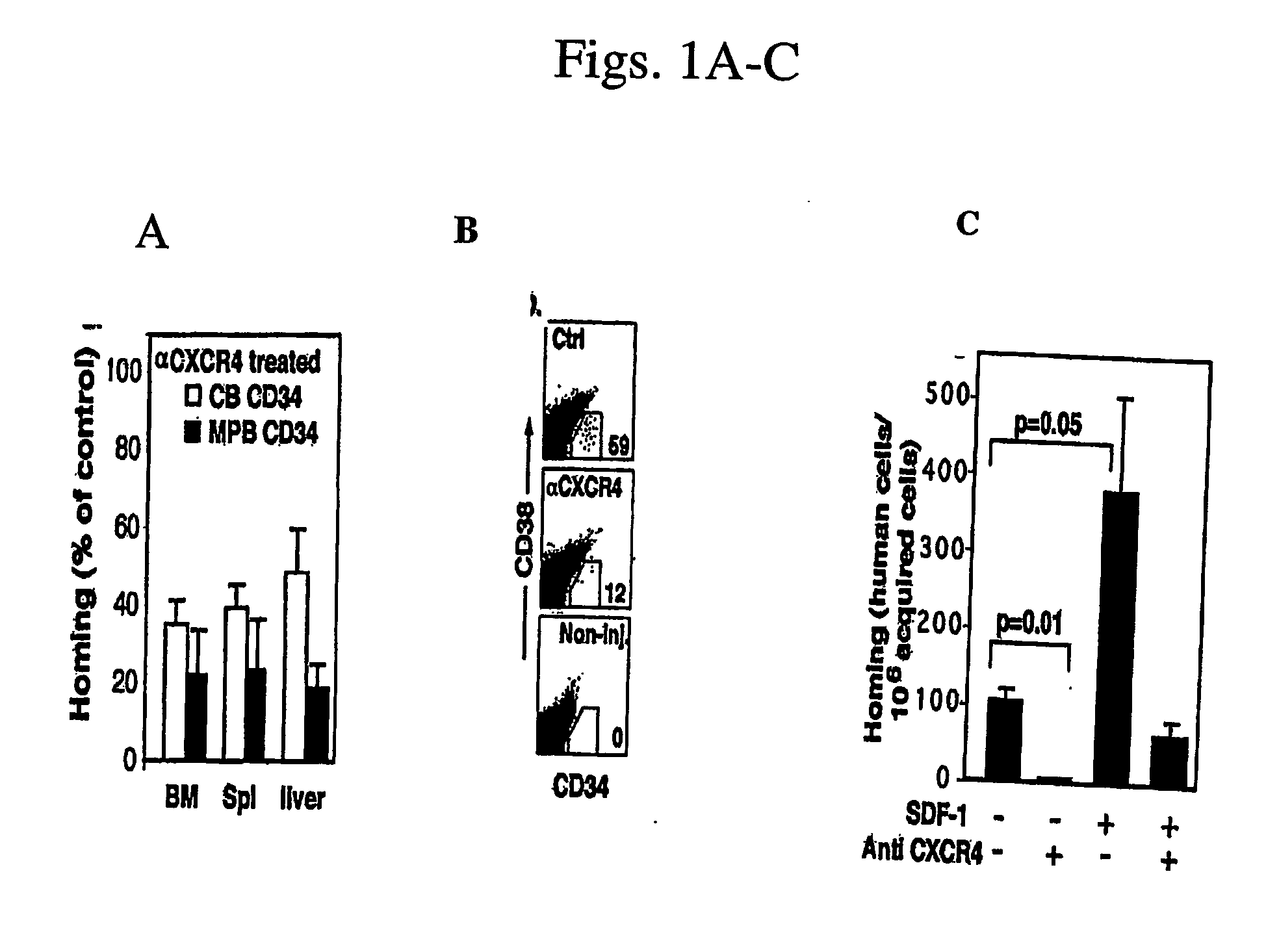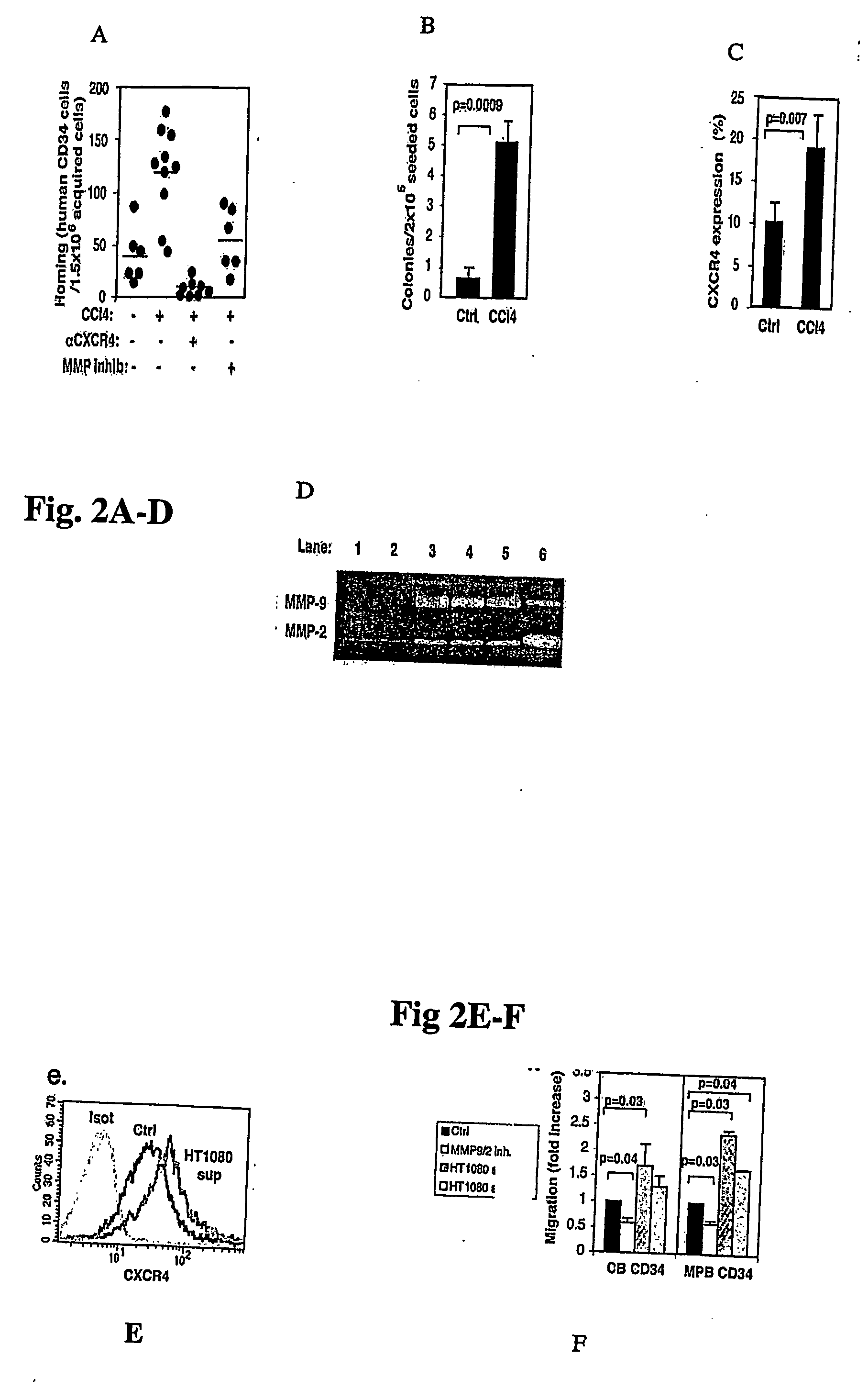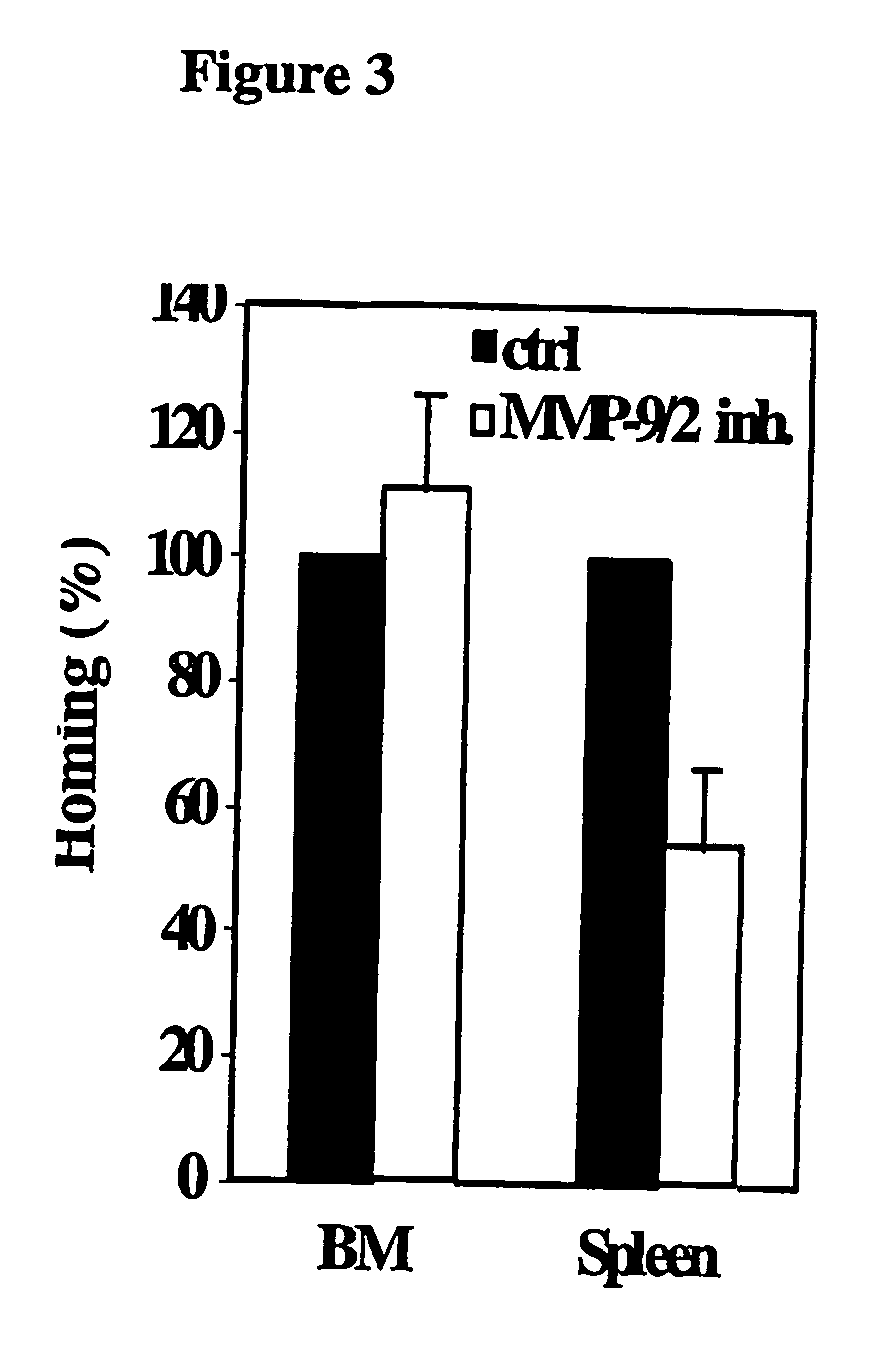Stem cells having increased sensitivity to sdf-1 and methods of generating and using same
- Summary
- Abstract
- Description
- Claims
- Application Information
AI Technical Summary
Benefits of technology
Problems solved by technology
Method used
Image
Examples
example 1
SDF-1 / CXCR4 Interactions Mediate Homing of Human CD34+ Progenitor Cells to the Liver in NOD / SCID Mice
[0174] To examine the role of SDF-1 in human stem cells (HSCs) recruitment to the liver, irradiated NOD / SCID mice were transplanted with human CD34+ enriched cells from mobilized peripheral blood or cord blood, with and without neutralizing CXCR4 antibodies, and homing thereof was assayed.
[0175] Materials and Experimental Procedures
[0176] Human cells—Cord blood (CB) cells and adult mobilized peripheral blood (MPB) cells were obtained after informed consent in accordance with procedures approved by the human ethics committee of the Weizmann Institute. CD34+ cell enrichment was effected using magnetic bead separation as previously described [Kollet (2001) Blood 97:3283-3291]. CXCR4 expression was determined by flow cytometry using purified anti human CXCR4 (clone 12G5, R&D, Minneapolis, Minn.) and secondary F(ab′)2 fragment of goat anti mouse IgG FITC (Jackson, West Grove, Pa.).
[01...
example 2
Stress-induces CXCR4+ Hematopoietic Progenitors Recruitment to an Injured Liver
[0183] Liver injury has been found to increase the levels of transplanted rodent bone marrow progenitor cells exhibiting an hepatic phenotype in the rat and murine liver [Petersen (1999) Science 284:1168-1170; Theise (2000) Hepatology 31:235-240; Lagasse (2000) Nat Med 6:1229-1234]. Carbon tetrachloride (CCl4)-induced liver injury one month post transplantation, in combination with hepatic growth factor (HGF) stimulation, significantly increased the levels of hepatic-like differentiation and human albumin production in immune deficient NOD / SCID and NOD / SCID / B2m null mice engrafted with human CD34+ and CD34+ / CD38 − progenitors, revealing <1% of human albumin producing cells in the murine liver 2 months post transplantation [Wang (2003) Blood (epub ahead of print)], supported in another report utilizing a different protocol [Kakinuma (2003) Stem Cells 21:217-227].
[0184] Experimental Procedures
[0185] L...
example 3
Involvement of MMP-9 / 2 in Migration and Repopulation of Precursor Cells to the Bone Marrow and Spleen in the Absence of Inflammation
[0190] The present work was aimed to uncover whether MMP-2 / 9 is also involved in homing, of precursor cells to spleen and bone marrow and in repopulation of such organs also in the absence of inflammation.
[0191] Initially, human cord blood CD34+ cells were treated for 2 hours with an MMP-9 / 2 inhibitor and injected in sublethally irradiated NOD / SCID mice.
[0192] CD34+ cells were pretreated for 2 hours with an MW-9 / 2 inhibitor and injected into subletally irradiated NOD / SCID mice (1-2×105 cells / mouse). Mice were sacrificed 5 weeks later and murine BM was labeled for the human pan leukocyte marker CD45 and assayed by FACS. 5 weeks later the mice were sacrificed and the number of human cells was measured in the murine BM. Table 1 shows that engraftment to the BM appears to be inhibited in MMP-2 / 9 inhibitor treated cells when compared to control non-treate...
PUM
| Property | Measurement | Unit |
|---|---|---|
| Sensitivity | aaaaa | aaaaa |
| Shear stress | aaaaa | aaaaa |
Abstract
Description
Claims
Application Information
 Login to View More
Login to View More - R&D
- Intellectual Property
- Life Sciences
- Materials
- Tech Scout
- Unparalleled Data Quality
- Higher Quality Content
- 60% Fewer Hallucinations
Browse by: Latest US Patents, China's latest patents, Technical Efficacy Thesaurus, Application Domain, Technology Topic, Popular Technical Reports.
© 2025 PatSnap. All rights reserved.Legal|Privacy policy|Modern Slavery Act Transparency Statement|Sitemap|About US| Contact US: help@patsnap.com



